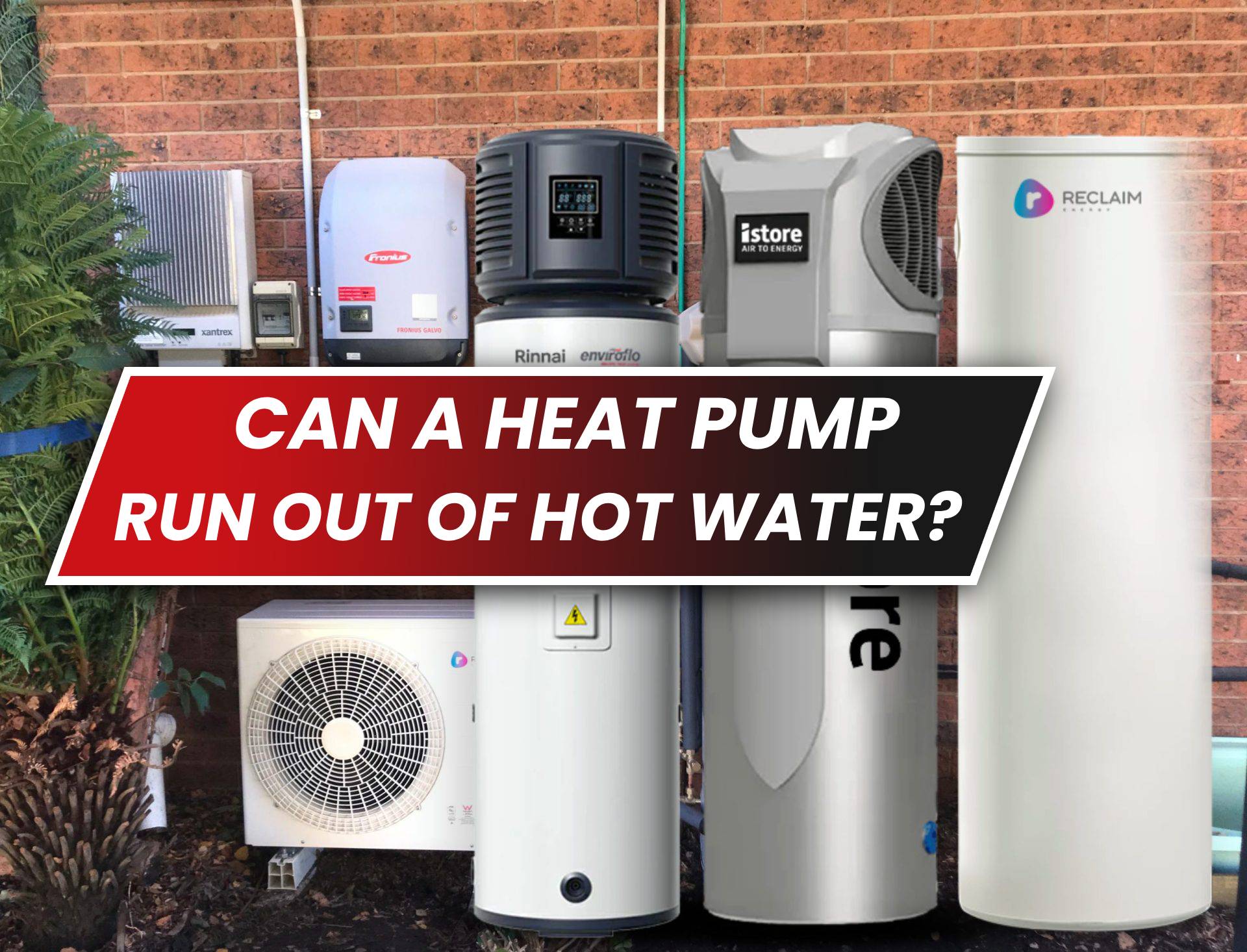
Ever wondered how you can heat your water using the air around you? It might sound like magic, but it’s […]

With rising energy costs in Australia, homeowners are continuously looking for more energy efficient solutions, and as such exploring heat pump systems for efficient hot water heating.
Heat pumps extract ambient heat to warm water, using much less electricity than conventional storage tanks. This leads some to question whether they produce enough hot water continuously without running out.
This article examines the hot water capacity of heat pumps and recovery time to determine if hot water shortages can occur.
Heat pump hot water production depends on several key system factors:
Like traditional hot water heaters, heat pumps require an insulated storage tank to house heated water volumes ready for distribution on demand.
Standard tank sizes range from 170 liters for small households to 400+ liters for larger homes with higher demand. Bigger tanks hold more hot water, increasing total capacity and providing buffer volumes during high usage.
A heat pump’s heating capacity, measured in kilowatts (kW), indicates the rate of heat energy transfer which is essentially how quickly it can heat water. Models range from 2.4kW for small units up to 5kW for larger tanks and households.
Higher heating capacities recover water temperatures faster after draw-offs.
Unlike gas or electric systems, heat pumps rely on absorbing heat from the surrounding air to warm water. In colder climates, the air is colder leading to lower energy extraction efficiency and heating capacities.
Australian installations incorporate varying ambient air temperatures in appropriate locations.
The number of occupants and their peak hot water volume demands ultimately determine total daily utilization. While usage varies, typical showers require 8-12 liters per minute at 45°C.
Laundry adds 30-95 litres per load, dishwashers 20-30 litres.
Drawing on the above factors, a properly sized heat pump unit comprised of a 270-litre tank provides sufficient hot water for up to five or seven consecutive 10-minute showers for a family of four.
It can also handle consecutive dishwasher and laundry loads.
Larger 400+-litre tanks provide extra capacity. These volumes meet standard residential hot water requirements.
While it is theoretically possible to drain a tank with excessive use, most properly set up heat pump systems offer adequate hot water continuity comparable to traditional gas or electric storage tanks:
Rapid Recovery and Reheat Times
Modern heat pump heating coils transfer warmth rapidly. Tanks can reheat water temperatures to up to 50°C+ from tepid within 60 to 90 minutes. Some advanced units restore 45°C+ showers in under an hour.
This swift recovery prevents prolonged waits between draw-offs.
Built-in Backup Heating Elements
If sensors detect tank temperatures dropping too low, usually around 45°C, an electric booster heating element will kick in to maintain hot water supply. This integrated secondary heating provides a hot water failsafe.
Designed for Peak Usage Periods
Reputable suppliers size heat pump tanks factoring in the typical peak demand volumes listed earlier.
Enough buffer capacity ensures continuity even during consecutive, back-to-back showers or heavy laundry/dish days in winter.
Minimal Standby Losses
Insulated heat pump tanks lose under 1°C per hour when idle, preserving stored thermal energy between draw-offs. Reduced standby losses mean less reheat downtime.
Smart App Integration
Many modern heat pump water heaters integrate app connectivity and smart features like usage learning and scheduling. These allow remote activation to ensure ample hot water is available when required.
Running out of hot water in appropriately designed and specified residential heat pump hot water systems is highly unlikely.
Tank volumes cater to typical peak demands, and rapid recovery times restore hot water availability within 1-2 hours. Backup heating elements prevent total loss, and smart controls maintain availability when needed.
Combining these factors, heat pumps can provide endless hot water for most Australian homes.
Also read: